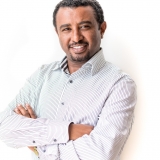Livestock production systems in developing countries are undergoing very rapid development. Sustained participation in development decisions regarding equitable, long term production rests upon a continued and inclusive learning and adaptive process. The aim of this project is to use inclusive participatory processes to integrate environmental, economic and equity considerations into policy making and implementation decisions around livestock intensification. To achieve the project aim, we take an innovative step forward in the use of computational tools for the management of environmental and livelihood change in developing country contexts. The CLEANED[1] tool that provides an assessment of livestock production system changes in data poor environments will be applied. To support this, we will also operationalize our project through an environmental and production trade-off “learning space‟ in each country. In Ethiopia, our project case study site is Atsbi Woreda, Tigray and the project also collaborates with the SAIRLA program of the National Learning Alliance (NLA). The project contributes through generating evidence-based research and to design tools that enable government, investors and key actors to deliver more effective policies and investments in Sustainable Agricultural Intensification (SAI). Particularly, the findings of this project will support the component on reduced greenhouse gas emission from livestock through improving efficiency of the livestock value chain in GTP-II. It is also corresponding to one of the CRGE pillar: Improving crop and livestock production practices for higher food security and farmer income while reducing emissions.
Why are we doing in this project?
- Livestock production systems in developing countries are undergoing rapid development
- These systems can be resource intensive and may have multiple environmental consequences
- They also have great potential for smallholder livelihoods – but the different consequences of different approaches need to be understood
What are we doing?
- Integrating environmental, economic and equity considerations into decision making around livestock intensification…
- …via three key considerations:
- Natural resource use and environmental impacts of livestock production at a landscape scale
- Smallholder livestock rearing generates multiple benefits
- Inclusive decision making through participatory, multi-stakeholder approaches
How are we doing it?
- Multi-disciplinary, multi-country team
- Three case study locations - Burkina Faso, Ethiopia and Tanzania
- Action research approach – rapid environmental assessment and participatory economics in a social learning process
Partners
Stockholm Environment Institute (SEI), International Livestock Research Institute (ILRI), Institut de l'Environnement et de Recherches Agricoles de Burkina Faso (INERA), Environment and Climate Research Center, Ethiopian Development Research Institute (EDRI), Sokoine University of Agriculture (SUA).
[1] “Comprehensive Livestock Environmental Assessment for improved Nutrition, a secured Environment and sustainable Development along livestock value chains”


